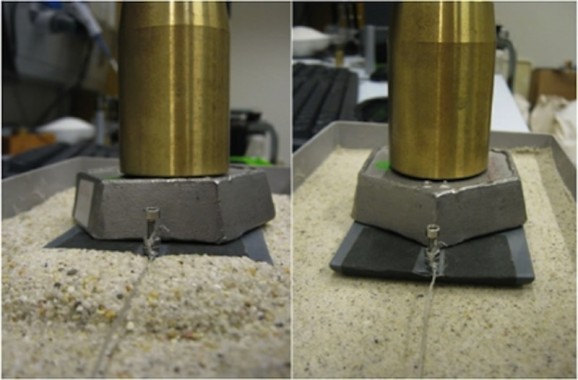Pyramid Mystery Solved (Again, But This Time For Real)
This article is more than 2 years old
 It’s a question so old that’s it’s become tantamount to “if a tree falls in the forest…” Still, humans are drawn to the Egyptian pyramids, largely because of the mystery of how people back in 2500 BC could move those gigantic stones without cranes and bulldozers. Over the centuries, many myths and theories have been posited about what techniques were used to construct these storied monuments, including spiral ramps and constructing and hauling the pyramids in water. A new study conducted by University of Amsterdam Physicists offers another theory — that the Egyptians wet the sand before pulling the stones across the desert.
It’s a question so old that’s it’s become tantamount to “if a tree falls in the forest…” Still, humans are drawn to the Egyptian pyramids, largely because of the mystery of how people back in 2500 BC could move those gigantic stones without cranes and bulldozers. Over the centuries, many myths and theories have been posited about what techniques were used to construct these storied monuments, including spiral ramps and constructing and hauling the pyramids in water. A new study conducted by University of Amsterdam Physicists offers another theory — that the Egyptians wet the sand before pulling the stones across the desert.
The Egyptians likely used a sled or some kind of other device to haul the stones, but the study showed just how much wetting the sand ahead of the sled would have reduced friction. The researchers got the idea from clues such as wall paintings, particularly one from the tomb of Djehutihotep that dates around 1900 BC. The painting shows 172 men pulling a statue with ropes, while another man in front of the sled appears to be pouring something on the sand.

Initially, scientists wondered if the pouring was part of a ceremony or ritual, but then they tried out the technique themselves by building small sleds, loading them up with heavy objects, and pulling them through sand. The dry sand would accumulate at the front of the sled, generating more friction, but when they added water, the grains of sand bound together and the sand acted more like a solid surface. Ironically, most children are well acquainted with this concept — it’s why they build sand castles with wet sand.

The researchers also learned that if the sand was too wet, the sled became harder to pull. So there’s an optimal degree of dampening: between 2% and 5% of the volume of the sand, it turns out. The researchers believe that wetting the sand in this way would have allowed the Egyptian manpower to be reduced by half. Does this mean that pretty soon we’ll see people hauling concrete on giant sledges? Probably not, although there are modern practical applications of the technique, particularly when it comes to understanding the way other granular substances behave.
This doesn’t explain how they lifted the giant stones, though there are plenty of other theories about intricate lever and pulley systems that might. Meanwhile, the aliens that actually built the pyramids are having a good laugh.












